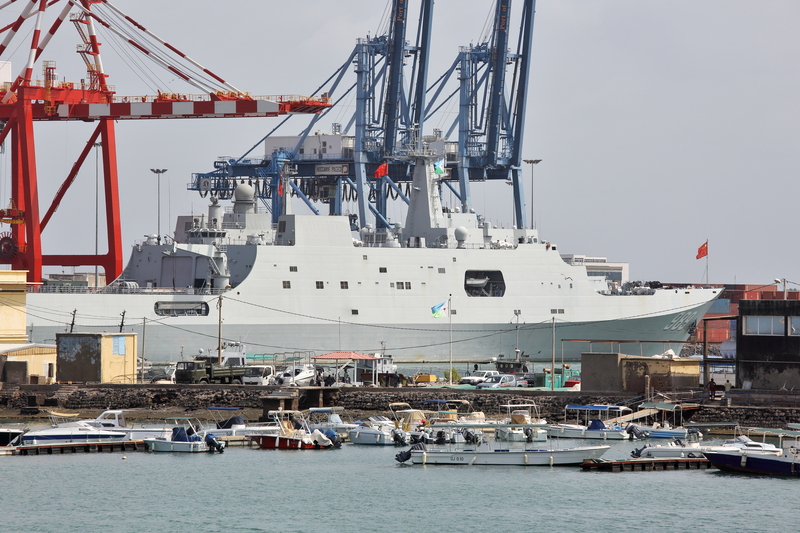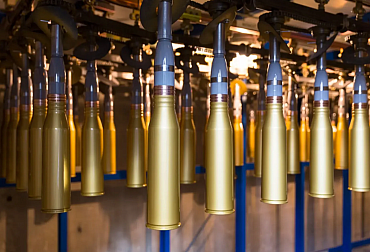Chinese overseas bases
People´s Liberation Army (PLA) Navy recently established a presence at the Ream Naval Base in Cambodia. It is part of the broader PLA Navy strategy to build more overseas bases as the People 's Republic of China (PRC) pursues its ability to project global power.
According to recent satellite images published by the Center for Strategic and International Studies, there are two PLA Navy warships permanently deployed at the Ream Naval Base in Cambodia. According to earlier reports, the PRC helped Cambodia build this strategically located naval base and train Cambodian sailors. Although Cambodian authorities said that, according to the Cambodian constitution, no foreign military is allowed to build bases on the Cambodian territory, no other foreign Navies (expect the PLA) are allowed to do port calls, as witness in the case of Japanese destroyers that were rerouted to different naval bases. It is not known why, but it is likely that it was linked to Chinese activities at the Ream naval base.

The latest information published by Chinese sources indicated that at least two warships – Type 056A frigates - are present at the Ream naval base since December 2023. What is interesting is their activity. Satellite images indicate that these frigates were at the newly constructed pier for 93 % of the time spent at the Ream naval base. Type 056A frigates are equipped, among other systems and weapons, with anti-submarine warfare capabilities, anti-ship missiles, and advanced air defense systems. Stationing these types of warships to the Ream naval base indicates Chinese intentions to further advance with intelligence gathering far from their homeports and controlling vital sea line as the Ream naval base is located close to the line connecting South China sea and Malacca Strait which is, at this point, vital for the Chinese economy as the PRC imports most of oil and gas by sea. In case of war in the western Pacific, the closure of the Malacca Strait could be fatal for the Chinese economy and war efforts. On the other hand, for the US and allies, this could be a relatively simple and not so demanding option how to halt potential Chinese war efforts.
Chinese intentions to build the blue water navy do not stop at Ream. Previously, PLA set up joint base in Djibouti coincidentally located near another vital sea line of communication, the Bab Al Mandeb Strait. There are several hundreds of PLA Marines stationed in Djibouti. Apart from Ream and Djibouti, PLA is likely to open several more naval bases overseas.
According to Aiddata Research Group, the PRC is investing heavily in at least eight other port facilities in Asia and Africa that could be potentially used by the PLA Navy. In the latest edition of The Science of Military Strategy, the National Defense Univer in Beijing calls for the exploitation of civilian port infrastructure along the Pacific and Indian Oceans to support overseas military operations. Moreover, there is another proof that PLA Navy seeks to become blue-water navy in its efforts to build aircraft carriers (both conventionally and nuclear-powered) as soon as possible.
According to Aiddata research, there are at least eight ports that could be used for PLA Navy operations within the next five years. Researchers found that, according to the analysis of available data on Chinese investments in port infrastructures paired with the strategic importance of these ports, the following places are likely to become PLA Navy bases in the near future. Hambantota (Sri Lanka), Bata (Equatorial Guinea), Gwadar (Pakistan), Kirbi (Cameroon), Vanuatu and Nacala (Mozambique).
As shown above, China would like to establish a permanent presence across the Pacific and Indian oceans. It also seeks to have access to bases in the southern Atlantic Ocean to be able to support its economic and other interest in Africa.
For Europe, it means that China is here to stay. Now, it will be difficult to drive China out of Africa and the Indian ocean if there are bases that host the PLA Navy. It could also hinder potential European efforts to participate in an armed conflict in the South China Sea or in the Taiwan Strait. There could also be clashes between US Navy assets (mainly from the 5th fleet in case of the Indian ocean) approaching the Indo-Pacific.








